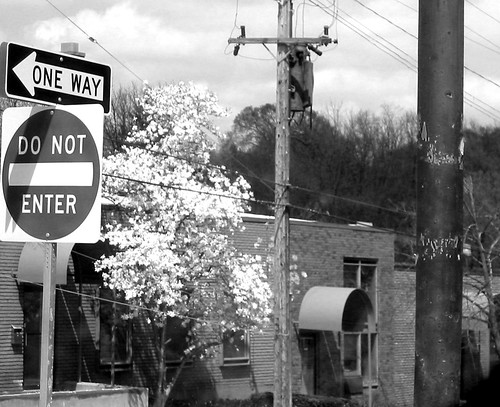
Flowering
WITHOUT
Particularity’s a Shed
Without Shingles, a rain-
Swept Shack of Nothing to do:
It mocks an empty Plain
Like a House unguarded without,
No Rookery, no Tree, no Flue.
Nothing bigger anneals to it—
It borrows its Sun and Dew.
No General stops to water
A horse, or curry it
With a blandishing Brush or Comb.
Lonesome is its riot.
—
Walt Whitman looking back on “the whole modus of that initiation” into the mysteries and pleasures of type-setting and printing (he learn’d under an apprenticeship beginning at age twelve): “the half eager, half bashful beginning—the awkward holding of the stick—the type-box, or perhaps two or three old cases, put under his feet for the novice to stand on, to raise him high enough—the thumb in the stick—the compositor’s rule—the upper case almost out of reach—the lower case spread out handier before him—learning the boxes—the pleasing mystery of the different letters, and their divisions—the great ‘e’ box—the box for spaces right by the boy’s breast—the ‘a’ box, ‘i’ box, ‘o’ box, and all the rest—the box for quads away off in the right hand comer—the slow and laborious formation, type by type, of the first line—its unlucky busting by the too nervous pressure of the thumb—the first experience in ‘pi,’ and the distributing thereof—all this, I say, what jour [journeyman] typo cannot go back in his own experience and easily realize.” That out of a little book by Ed Folsom titled Whitman Making Books, Books Making Whitman, catalog and commentary to a 2005 sesquicentennial exhibition of the 1855 (and subsequent) editions of Whitman’s Leaves of Grass. Folsom considers how Whitman’s direct participation in the design and printing of Leaves of Grass (to the point where it should be consider’d part of Whitman’s compositional strategy) result’d in not only numerous editions, but “multiple issues, often with different bindings, different paper size, different cover designs, and different configurations of contents.” Evidence is present’d of Whitman making changes mid-press-run. Whitman: “I sometimes find myself more interested in book making than in book writing . . . the way books are made—that always excite my curiosity: the way books are written—that only attracts me once in a great while.” And: “Having been a printer myself . . . I have what may be called an anticipatory eye—know pretty well as I write how a thing will turn up in the type—appear—take form.” I recall a proposal made not entirely jokingly by, I think, James McConkey at Cornell back in the early ’eighties with the first signs of dangerously saturate-levels of MFA were being observed (nobody getting jobs)—that the candidates be required to gain, too, some expertise in the printing trades, fine letterpress or commercial. A proposal scoff’d at, though I, having done both (though not then doing an MFA), rather liked it. So: pleased to read of Whitman’s suggesting to the young: “Whack away at everything pertaining to literary life—mechanical part as well as the rest. Learn to set type, learn to work at the ‘case,’ learn to be a practical printer, and whatever you do learn condensation.” (I jump’d to a brainmeat-strike of thinking maybe Pound’d got that “condensare” out of Whitman, forgetting how he owes it to Bunting (ABC of Reading): “I begin with poetry because it is the most concentrated form of verbal expression. Basil Bunting, fumbling about with a German-Italian dictionary, found that this idea of poetry as concentration is as old almost as the German language. ‘Dichten’ is the German verb corresponding to the noun ‘Dichtung’ meaning poetry, and the lexicographer has rendered it by the Italian verb meaning ‘to condense.’ . . . Dichten = Condensare.”)
Some lovely details in Folsom’s book. How the use of a line out of Emerson’s famous letter to Whitman (“I great you at the beginning of a great career.”—R. W. Emerson) on the (fat) spine of the second (1856) edition of Leaves of Grass invent’d the dastardly cover blurb. (That edition design’d purposefully by Whitman to “go into any reasonable pocket.”) Or how, after images of leaves and rootlets emerging out of the title’s words on the cover and title page in the early editions, Whitman turns to “spermatic imagery” for the third (1860) edition (which first includes both the “Calamus” and “Enfans d’Adam” poems (“Limitless limpid jets of love hot and enormous, quivering jelly of love, white-blow and delirious juice . . .”) The squiggles decorating the word “GRASS” on the title page mimic the “distinctive tails that had become familiar in medical textbooks of the time . . . and the period after the title is a perfect representation of a sperm cell.” Or how Whitman long’d to make “a Bible for American democracy that would reconfigure morality on radically democratic terms.” In a “working copy” of the 1860 edition, Whitman “carefully noted the number of words in the Bible (895,752), the number of words in the New Testament (212,000), and the number of words in the ‘Boston ed. Leaves of Grass’ (150,500). To this total, he added the words in his new book of Civil War poems, Drum-Taps (33,000), giving him a total of 183,500, an impressive amount of verbiage, but still quite a ways from overtaking his ancient rival.”
The Walt Whitman Archive, something mount’d simultaneously with the exhibition and its catalog is here. Something nearly identical to the text of the catalog is here. Somewhere in its early pages is mention of two versions of the Whitman “rough” engraving: “bulging-crotch” and “flat-crotch.” A later edition crops the offending half of the body altogether (shades of Elvis film’d for the Ed Sullivan show waist up.)

Walt Whitman, 1819-1892
